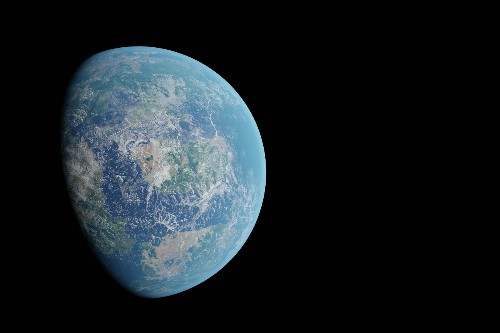Unlocking the Mysteries of Earth’s Oxygen-Rich Atmosphere
A groundbreaking study, led by a researcher from the University of Bristol and published in Nature Geoscience, has shed new light on the evolution of oxygen, carbon, and other essential elements throughout Earth’s history. The findings could help scientists assess which other planets have the potential to develop life, from plants to animals and even humans.
The Role of Carbon-Rich Rocks in Oxygen Production
The research reveals, for the first time, how the accumulation of carbon-rich rocks has accelerated oxygen production and its release into the atmosphere. This process has long puzzled scientists, leading to conflicting explanations about how Earth’s atmosphere became oxygen-rich.
Dr Lewis Alcott, lead author and biogeochemist at the University of Bristol, explained, “This breakthrough is important and exciting because it may help us understand how planets, other than Earth, have the potential to support intelligent, oxygen-breathing life.”
Simulating Earth’s Complex Biogeochemical Cycles
The scientists developed a sophisticated computer model to accurately chart key changes in the carbon, nutrient, and oxygen cycles over 4 billion years of Earth’s history. The model takes into account the steady emission of carbon dioxide by volcanoes, which enters the ocean and forms rocks like limestone. As these rocks accumulate, they can release their carbon during tectonic processes, such as mountain building and metamorphism.
Implications for Life on Other Planets
The discovery suggests that older planets, like Earth, which originated billions of years ago, may have better prospects for accumulating enough carbon-rich deposits in their crust. This accumulation could facilitate the rapid recycling of carbon and nutrients necessary for life.
The findings showed that the gradual carbon enrichment of the crust leads to increasing recycling rates of carbon and various minerals, including the nutrients needed for photosynthesis. This process, which green plants use to absorb nutrients from carbon dioxide and water using sunlight, steadily accelerates oxygen production over the course of Earth’s history.
Future Research and Advancements
The research, which began while Dr Alcott was a Hutchinson Postdoctoral Fellow at Yale University in the United States, opens the door for future work to further unravel the complex interrelationships between planetary temperature, oxygen, and nutrients.
Co-author Prof Benjamin Mills from the University of Leeds noted, “We have lots of information about distant stars and the size of the planets that orbit them. Soon this could be used to make a prediction of the planet’s potential chemistry, and new advances in telescope technology should let us know if we are correct.”
As technology advances and our understanding of Earth’s biogeochemical cycles deepens, scientists will be better equipped to assess the potential for life on other planets. This groundbreaking study marks a significant step forward in our understanding of the evolution of Earth’s atmosphere and the conditions necessary for the development of complex life forms.


